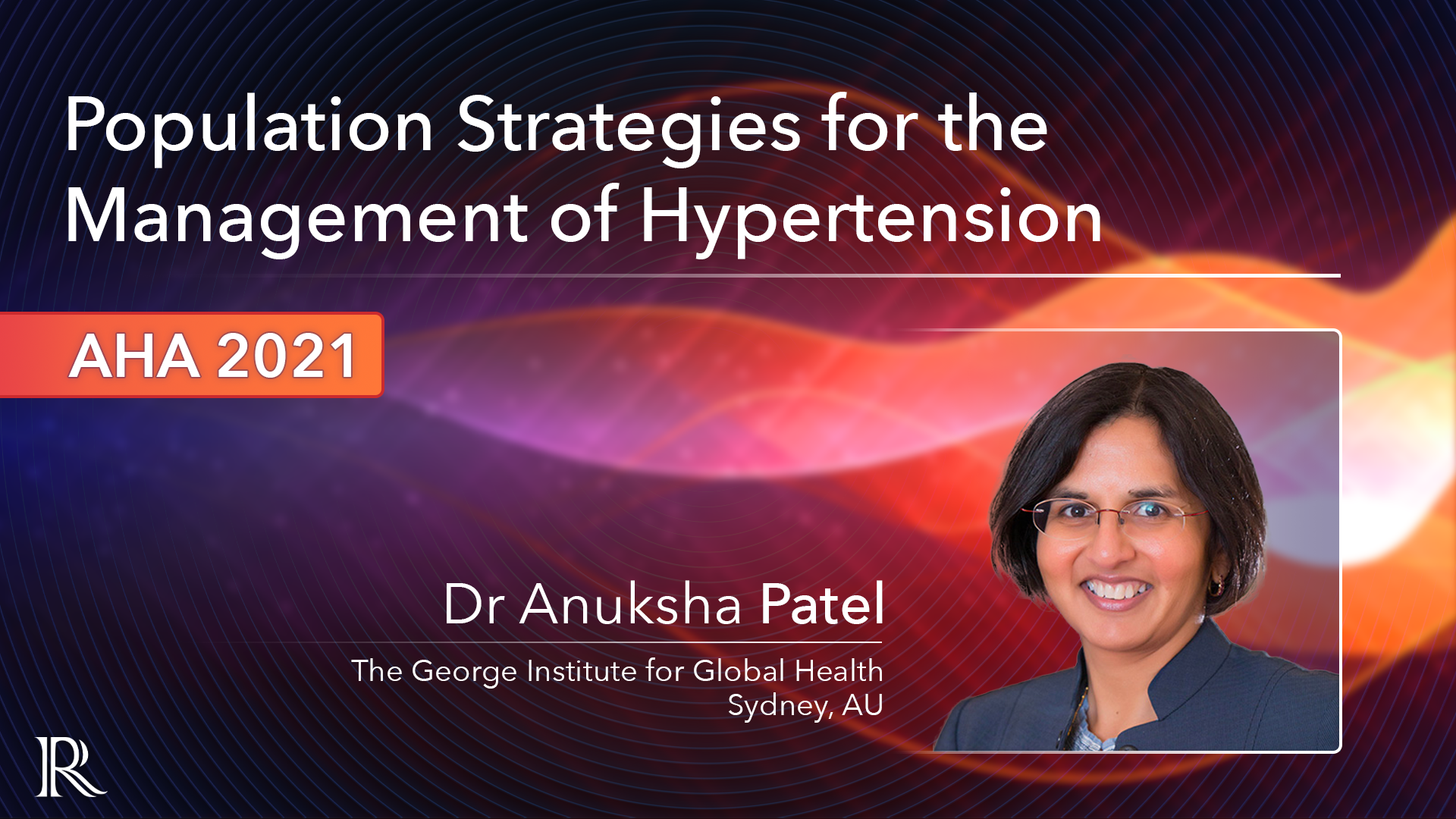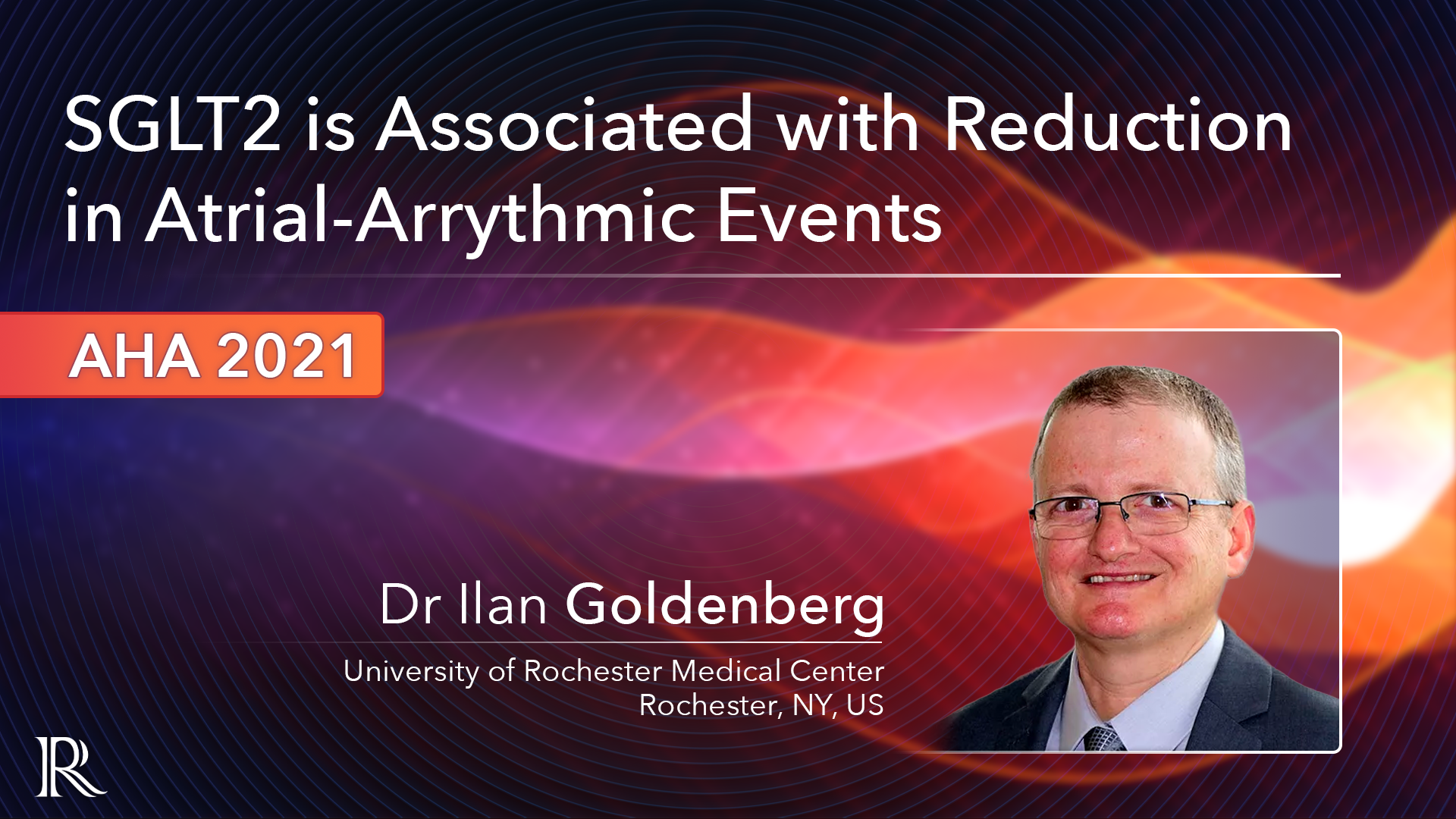- My name is Anushka Patel, I'm the vice principal director and chief scientist of the George Institute for Global Health, University of New South Wales in Sydney, Australia. And I'm going to be talking about population strategies for hypertension management.
Issues in Population Strategies for Hypertension Management
So, I think the most pertinent issue for hypertension control today is the fact that most people in the world with hypertension, (there's about a billion people globally, estimated to have hypertension) that don't have good control. It's only estimated that about 23% of women and 18% of men globally have adequate blood pressure control. And that's very recent data that's been produced just in the last few months. So, it really is a major problem and requires I think, a suite of, of strategies to address that problem.
Population Strategies in Hypertension Management
I think there are two major strategies that I'd like to talk about in terms of population approaches to hypertension management, where we've actually identified some progress in the last couple of years. So, one is around how we should treat individuals and the second is how we should more effectively deliver treatments to those who most need them.
So, one of the most exciting developments in the, in the ‘how to treat’ category is a very exciting publication earlier this year around using salt substitutes, there was a study published in the New England Journal of Medicine called the China Salt Substitute study that focused on people who'd had a recent stroke with hypertension and showed that substituting regular salt with a low sodium, high potassium substitute reduced not only blood pressure and cardiovascular events, but also mortality. So that's, that's been important finding.
There are also new ways of using the, you know, real plethora of drugs that we've had for decades treat hypertension more effectively. So, the typical way that we treat blood pressure is that we start with one drug at a low dose, and then we slowly increase that dose as, as needed. And then if we don't have adequate blood pressure control, we added another drug at a low dose and slowly increased that, etc. But we know that's a recipe for therapeutic inertia and most people don't get on adequate therapy.
There's now been a series of studies that have shown that using fixed dose combinations of two or more blood pressure lowering drugs, often a lower dose, improves blood pressure control compared to the standard approach, without increasing side effects. So as a result, many guidelines around the world now do recommend fixed dose combination therapy, particularly dual combination therapy as either initial treatment for hypertension or early treatment. And indeed, that's been listed now, dual combination therapies being listed on the WHO essential medicines list for the first time in the last couple of years.
Challenges in Strategy Implementation
The challenge with these strategies or with blood pressure control in general, is why the other area we would need to progress is how do we get these treatments to those who most need them? And again, in the last couple of years, we've had quite a few examples, successful models of care for treating hypertension. And these combine a number of components, they're multifactorial models of care that include things like task sharing. So, involving non-physicians such as nurses or pharmacists, or even community healthcare workers in low- and middle-income countries, to undertake some of the tasks in blood pressure control and follow up that is formally undertaken by physicians. Also use of clinical decision support to guide more, more rapid increases in therapy and regular follow-up of patients who need treatment. So, there's been studies both in high-income countries, as well as in low and middle-income countries that have shown that these new models of care can be very effective.
The issue and the challenge moving forward is maybe these studies have been demonstrated to be effective in trials, but we really now need to move to the next phase where we can scale this up to large populations and show that these models of care can be maintained. They're sustainable.
Key Messages for Hypertension Strategies
I think perhaps one of the most important messages that have come out of research over the last couple of years in with respect to strategies to really impact that evidence practise gap we see in hypertension control is that we have to consider this is a multifactorial problem that requires a multi-factorial solution or multifaceted solution. So, for example, a salt substitute, I think we've finally got data that shows that this is potentially an effective strategy in certain populations. New ways of using old drugs can potentially help reduce that gap. And finally, we really need to continue to think about innovative models of care, to reach those people with hypertension who are currently not getting adequate treatment. And most importantly, we've got to think about how do we make these models of care, scalable and sustainable and really that that's the major challenge moving forward.
AHA 2021: Late-breaking Science Video Collection
Published: 12 November 2021
-
Views:
 3872
3872
-
Likes:
 7
7
-
Views:
 3872
3872
-
Likes:
 7
7
-
 Up Next
Up Next -
 5m 41sPart 3 | Session 2 ROSE: CETPi Lowers LDL-C in Patients Taking High Intensity Statins
5m 41sPart 3 | Session 2 ROSE: CETPi Lowers LDL-C in Patients Taking High Intensity Statins -
 7m 58s
7m 58s -
 6m 56sPart 3 | Session 4 EAST-AFNET 4: Early Rhythm Control Was Consistent in AF Patterns
6m 56sPart 3 | Session 4 EAST-AFNET 4: Early Rhythm Control Was Consistent in AF Patterns -
 6m 35sPart 3 | Session 5 EMPEROR-Preserved: Empagliflozin, Health Status, & QoL in Patients With HFp
6m 35sPart 3 | Session 5 EMPEROR-Preserved: Empagliflozin, Health Status, & QoL in Patients With HFp -
 10m 20s
10m 20s -
 4m 26sPart 3 | Session 7 SGLT2 is Associated with Reduction in Atrial-Arrythmic Events
4m 26sPart 3 | Session 7 SGLT2 is Associated with Reduction in Atrial-Arrythmic Events -
 8m 26sPart 3 | Session 8 SMART-CRT: Effects of AV Optimization on CRT Outcomes
8m 26sPart 3 | Session 8 SMART-CRT: Effects of AV Optimization on CRT Outcomes -
 10m 10s
10m 10s -
 22m 15s
22m 15s -
 11m 55sPart 3 | Session 11 SPIRIT-HCM: Quality of Life After SM in Obstructive Patients With HCM
11m 55sPart 3 | Session 11 SPIRIT-HCM: Quality of Life After SM in Obstructive Patients With HCM
-
 16m 38sPart 1 | Session 1 AHA 2021 Late-breaker Discussion: The EMPULSE Trial Harriette Van Spall, Adriaan A Voors
16m 38sPart 1 | Session 1 AHA 2021 Late-breaker Discussion: The EMPULSE Trial Harriette Van Spall, Adriaan A Voors
-
 16m 2sPart 1 | Session 2 AHA 21 Late-breaker Discussion: The CHIEF-HF Clinical Trial John Spertus, Harriette Van Spall
16m 2sPart 1 | Session 2 AHA 21 Late-breaker Discussion: The CHIEF-HF Clinical Trial John Spertus, Harriette Van Spall
-
 12m 12sPart 1 | Session 3 AHA 2021 Late-breaker Discussion: The Digital Care Transformation Study Alexander J Blood, Harriette Van Spall
12m 12sPart 1 | Session 3 AHA 2021 Late-breaker Discussion: The Digital Care Transformation Study Alexander J Blood, Harriette Van Spall
-
 9m 51sPart 2 View from the Thoraxcenter – What's Hot at AHA 2021 Nicolas M Van Mieghem, Joost Daemen
9m 51sPart 2 View from the Thoraxcenter – What's Hot at AHA 2021 Nicolas M Van Mieghem, Joost Daemen
Overview
Our regular review series View from the Thoraxcenter hosted by Prof Nicolas Van Mieghem and Dr Joost Daemen provide a concise and insightful preview of the late-breaking science presented at AHA Scientific Sessions 2021.
For a deep-dive, watch Dr Harriette Van Spall's Late-breaking Discussion series on highly expected trials with principal investigators.
Short, accessible Expert Interviews will be available conducted with select faculty focusing on the results, applicability, and impact on future research.
More from this programme
Part 1
Late-breaker Discussion Series
Host, Dr Harriette Van Spall interviews the late-breaker presenters of AHA Scientific Sessions 2021.
Part 2
View from the Thoraxcenter: Preview of the Late-Breaking Trials
Part 3
Expert Interviews
Short, accessible Expert Interviews will be available conducted with select faculty focusing on the results, applicability, and impact on future research.
Faculty Biographies
Transcript





